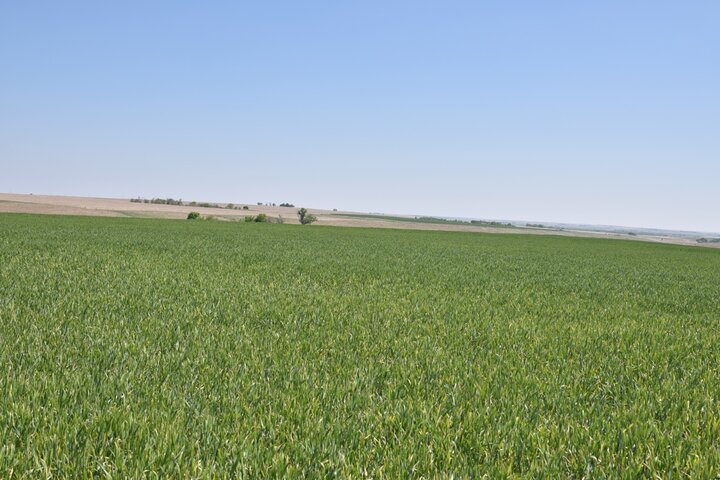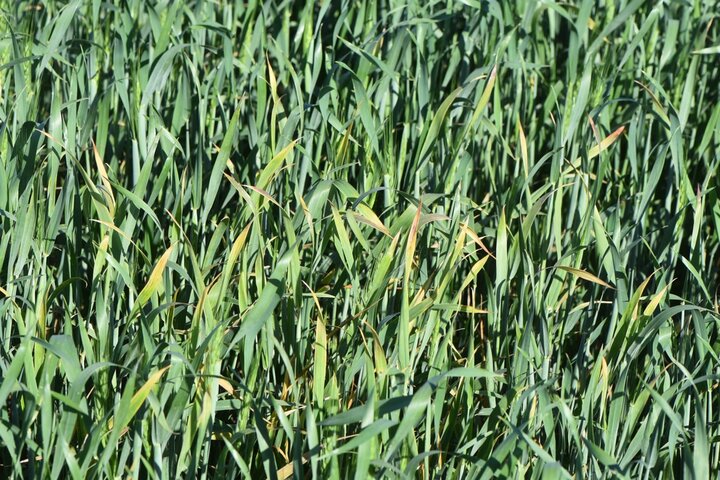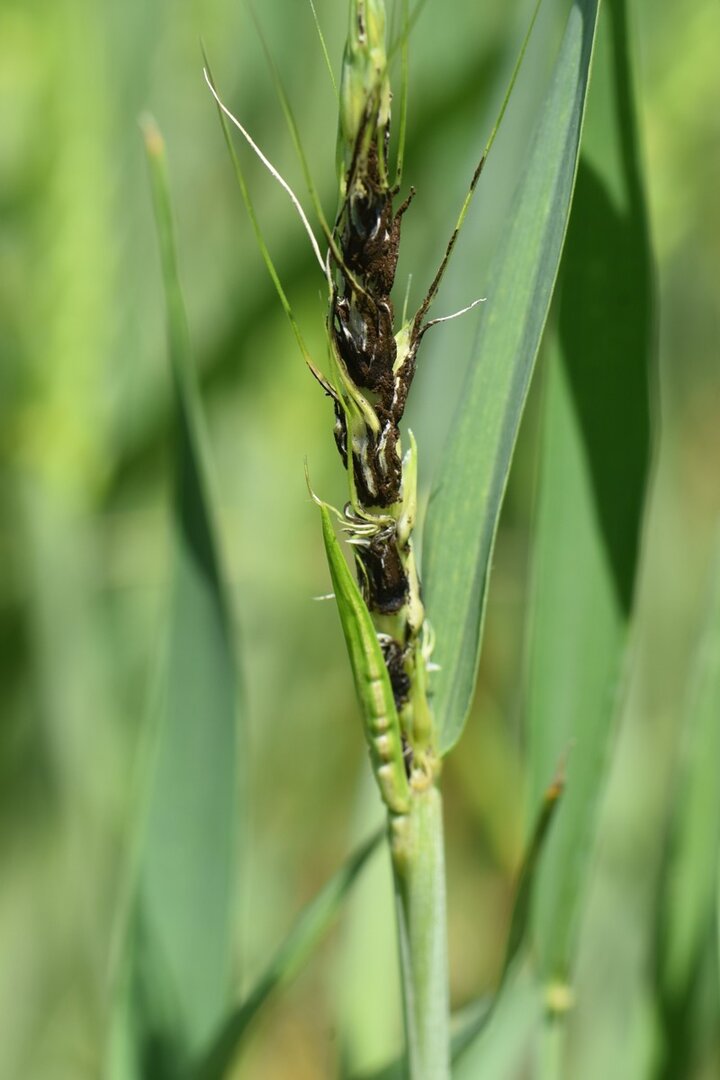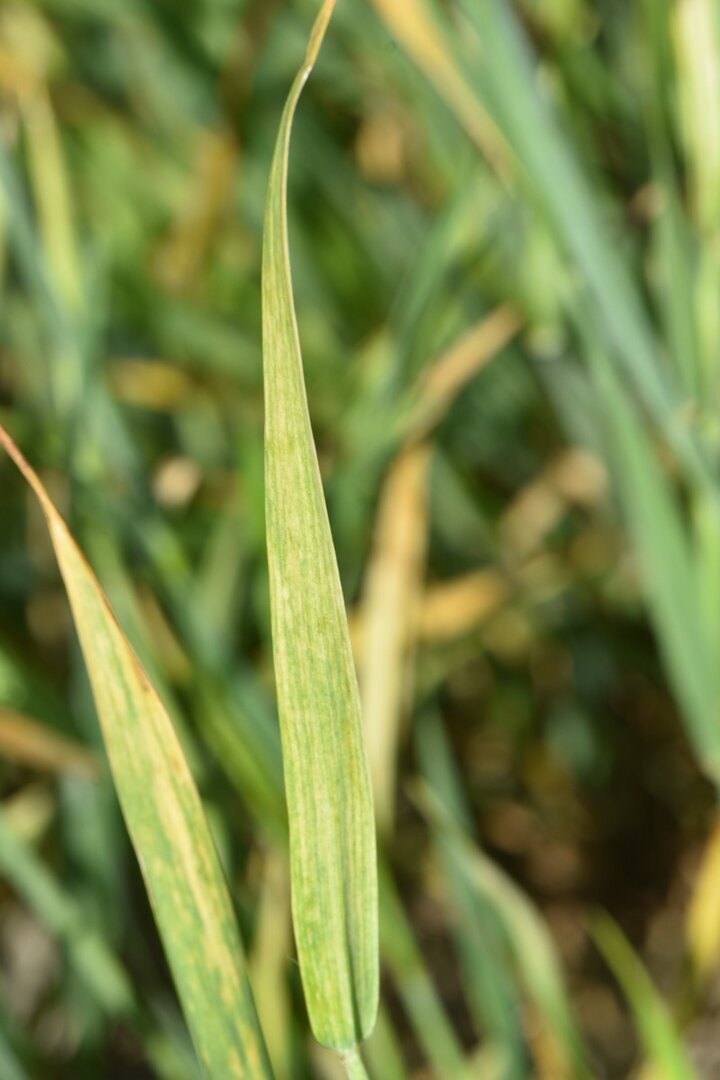A survey of wheat fields in southern west central Nebraska (Furnas and Harlan Counties) on May 19 found most fields to have little or no disease. Growth stage was variable among fields, ranging from Feekes 7 (second node palpable) to Feekes 10.5 (head fully emerged). Two fields had a high incidence of barley yellow dwarf (Figure 1 and Figure 2), a virus disease transmitted by aphids. Other diseases observed at a low to moderate incidence in some fields were fungal leaf spots, mainly Septoria tritici blotch (Figure 3). Trace levels of loose smut (Figure 4) and wheat streak mosaic (Figure 5), a virus disease transmitted by wheat curl mites, were also present.
At Havelock Farm in Lincoln (Lancaster County) on May 20, the predominant diseases in research plots were barley yellow dwarf (Figure 6), Septoria tritici blotch, and powdery mildew.






Management
Virus diseases
Virus diseases cannot be controlled once they occur. Management of barley yellow dwarf is achieved with a combination of strategies and tactics including control of aphid populations, avoiding early planting in the fall, controlling grassy weeds, insecticide seed treatments, and planting resistant or tolerant wheat varieties.
Foliar fungal diseases
A fungicide application at 50-100% flag emergence will effectively control foliar fungal diseases (leaf spots and rusts). Although stripe rust has not been reported in Nebraska wheat fields to date, it is likely to occur in the coming weeks. Continued scouting for early detection of stripe rust and leaf rust is recommended.
Fusarium head blight
With wheat headed or heading soon, monitor the weather and the Fusarium risk tool to assess the risk of Fusarium head blight (scab). The risk for scab increases with abundant rainfall before and during flowering. If the risk for scab is high, a fungicide application at early flowering and up to six days later is recommended. Fungicides that have been shown to have the best efficacy on scab are Prosaro, Caramba, and Miravis Ace.

